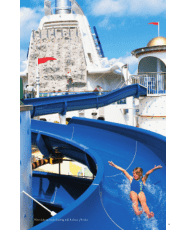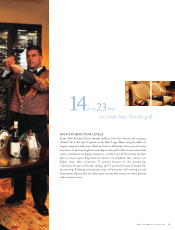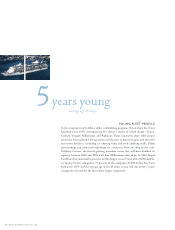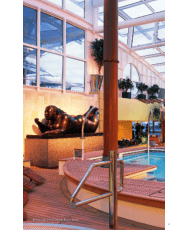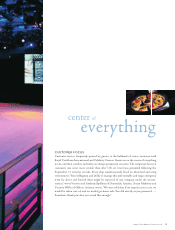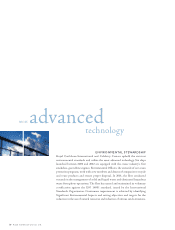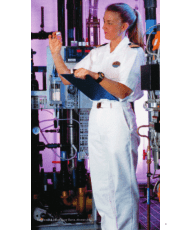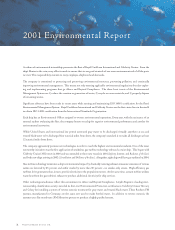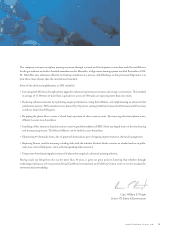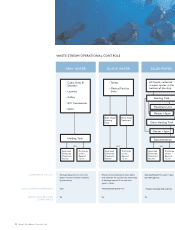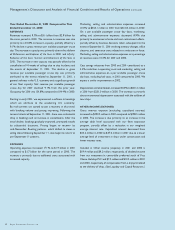Royal Caribbean Cruise Lines 2001 Annual Report Download - page 24
Download and view the complete annual report
Please find page 24 of the 2001 Royal Caribbean Cruise Lines annual report below. You can navigate through the pages in the report by either clicking on the pages listed below, or by using the keyword search tool below to find specific information within the annual report.
22 Royal Caribbean Cruises Ltd.
A culture of environmental stewardship permeates the fleet of Royal Caribbean International and Celebrity Cruises. From the
ship’s Master to the crew, every effort is made to ensure that we are good stewards of our ocean environment and of all the ports
we visit. This responsibility extends to every employee, shipboard and shoreside.
The company is committed to protecting and preserving environmental resources, preventing pollution, and continually
improving environmental management. This means not only meeting applicable environmental regulations but also explor-
ing and implementing programs that go Above and Beyond Compliance. The three basic tenets of the Environmental
Management System are 1) reduce the creation or generation of waste; 2) recycle or reuse materials; and 3) properly dispose
of remaining wastes.
Significant advances have been made in recent years while earning and maintaining ISO 14001 certification for the fleet’s
Environmental Management System. Royal Caribbean International and Celebrity Cruises are the first cruise lines in the world
to obtain ISO 14001 certification from the International Standards Organization.
Each ship has an Environmental Officer assigned to oversee environmental operations. Every year, with the assistance of an
external auditor evaluating the fleet, the company honors one ship for superior environmental performance and another for
environmental innovation.
While United States and international law permit untreated gray water to be discharged virtually anywhere at sea and
treated black water to be discharged four nautical miles from shore, the company’s standard is to make all discharges at least
12 nautical miles from shore.
The company aggressively pursues new technologies in order to reach the highest environmental standards. One of the most
noteworthy initiatives was the first application of smokeless, gas-turbine technology onboard a cruise ship. This began with
Celebrity Cruises’ Millennium in 2000 and was extended to three new vessels in 2001 (Infinity, Summit, and Radiance of the Seas)
and both new ships arriving in 2002 (Constellation and Brilliance of the Seas). Altogether, eight ships will have gas turbines by 2004.
Gas-turbine technology minimizes a ship’s environmental impact by drastically reducing exhaust emissions; emissions of nitrous
oxides are lowered by 85 percent and sulfur oxides by more than 90 percent – no smoke, only steam. High-efficiency gas
turbines drive generators that, in turn, provide electricity to the propulsion motors. At the same time, a steam turbine utilizes
waste heat from the gas turbine’s exhaust to produce additional electricity for ship services.
Other technological advances reflect this commitment to Above and Beyond Compliance. Lloyd’s Register, a leading inter-
national ship classification society, awarded its first-ever Environmental Protection certificates to Celebrity Cruises’ Mercury
and Galaxy for installing a system of reverse osmosis treatment for gray water and treated black water. These Rochem FM
systems, manufactured in Germany, are the same sort used to make bottled water. In addition to reverse osmosis, the
systems use a flat-membrane (FM) filtration process to produce a highly purified stream.
2001 Environmental Report



